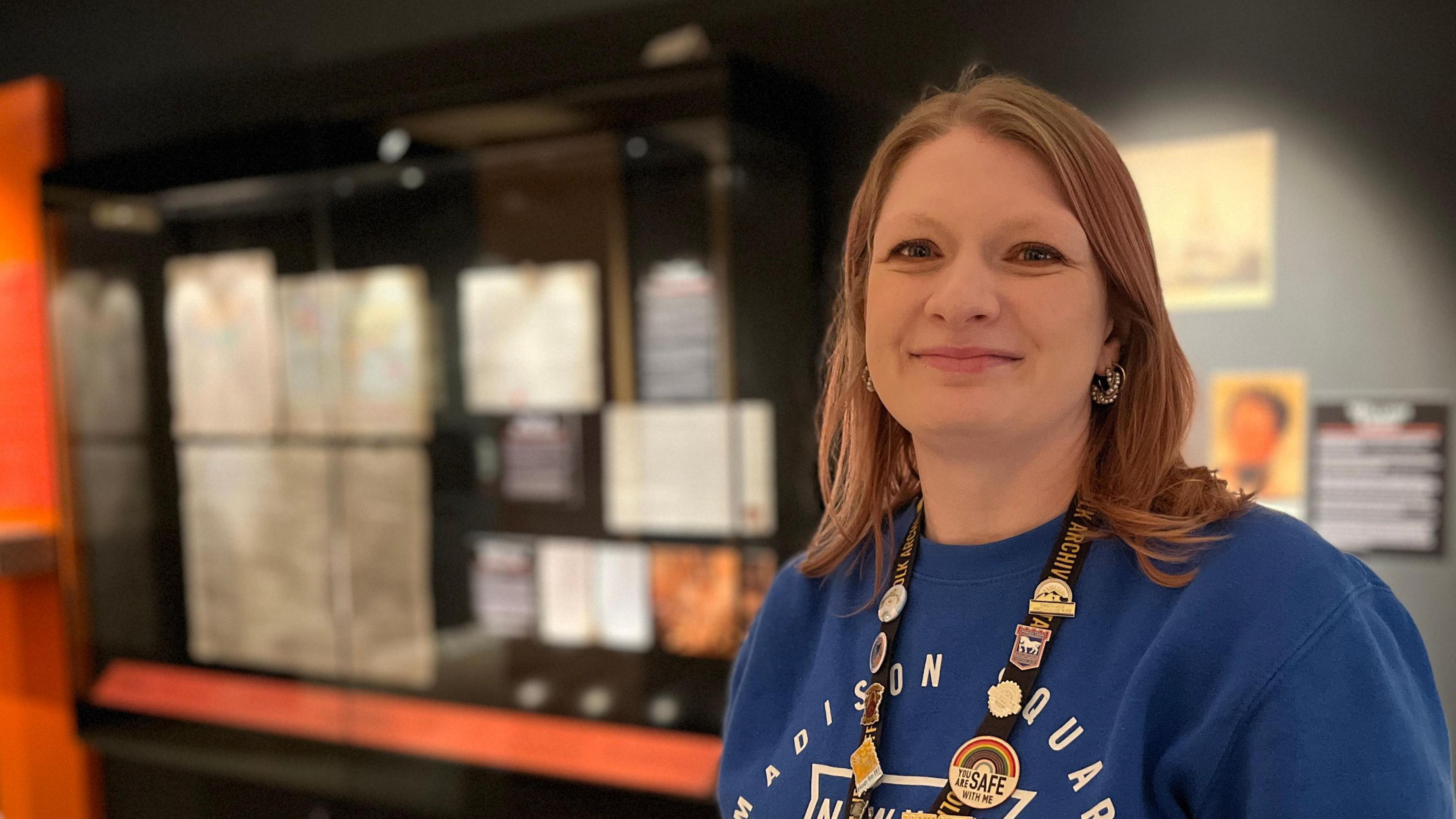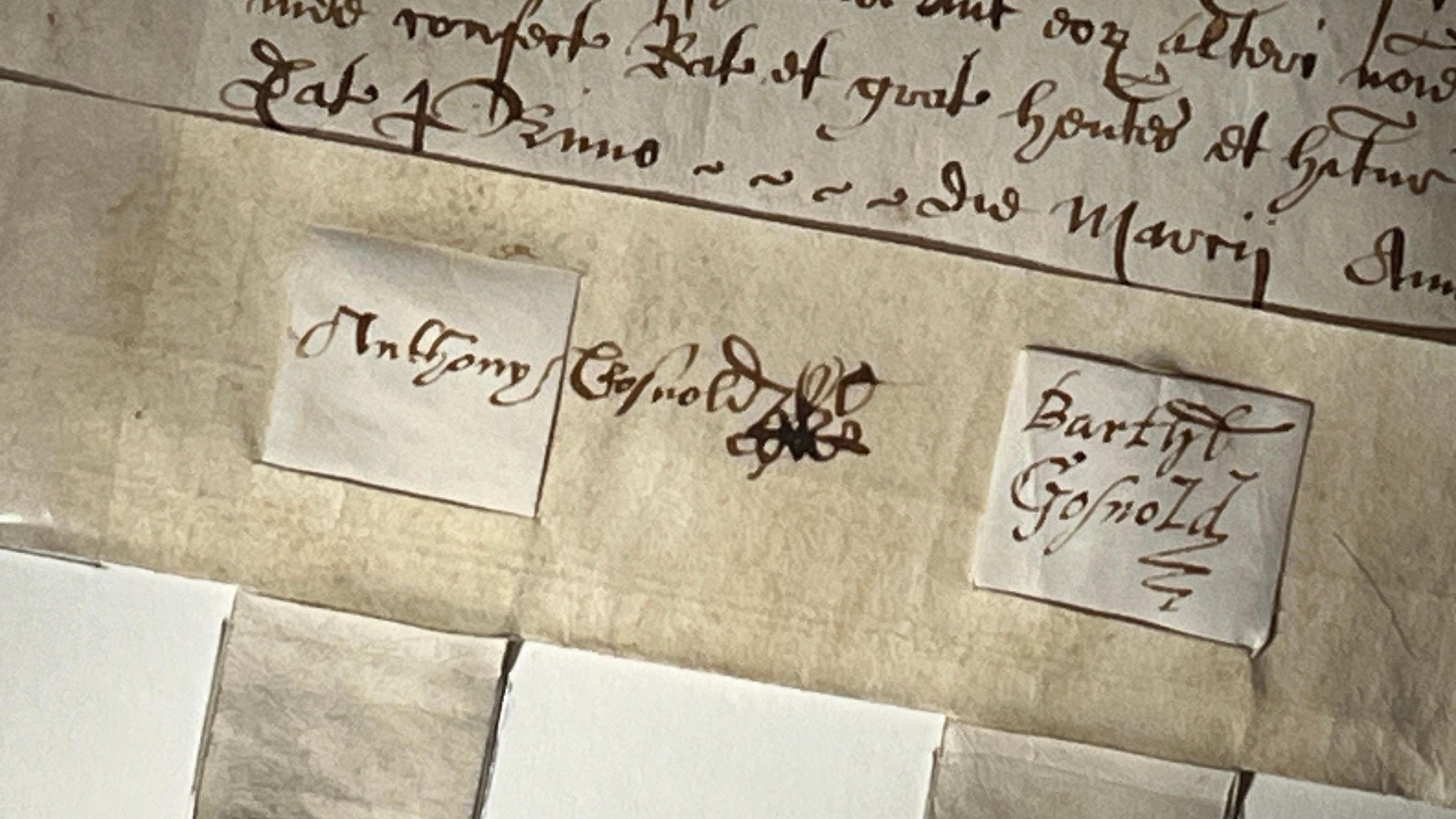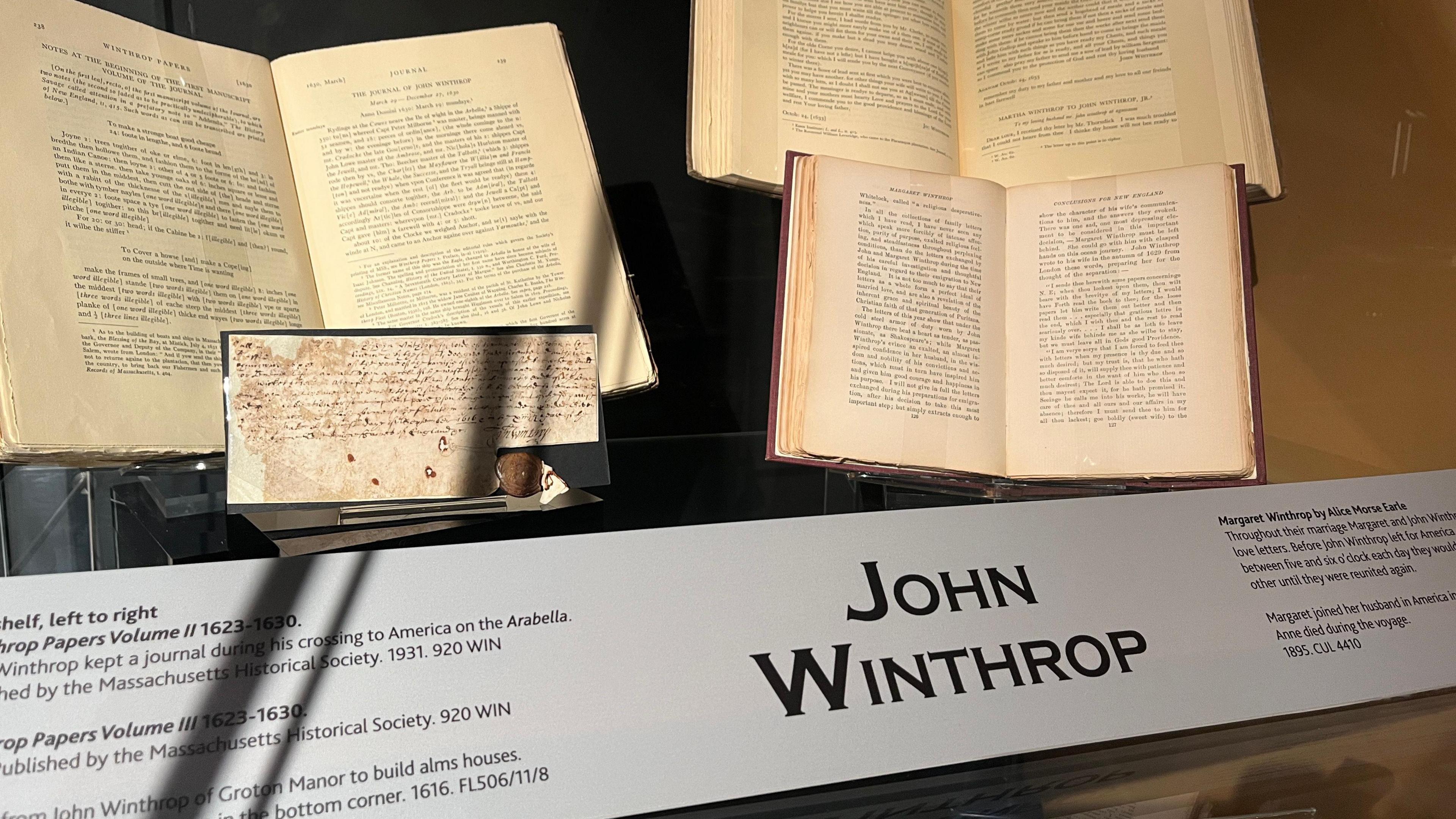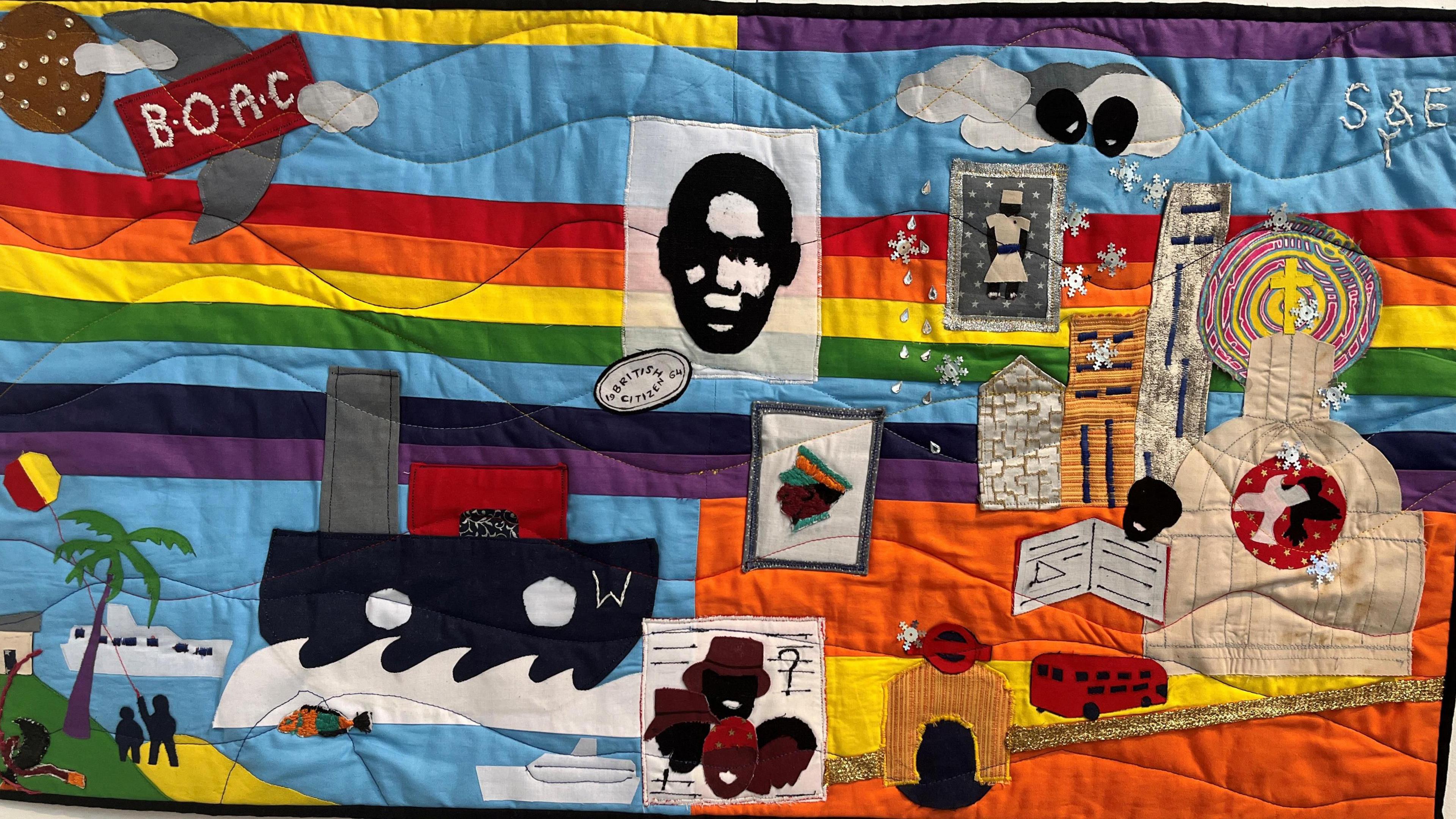New exhibition explores stories of emigration

Emily Shepperson said the displays showed the personal achievements and challenges of the emigrants
- Published
An exhibition that focuses on the historical stories of people who left a county to emigrate abroad has opened.
Departures will be showcased at the Suffolk Archives building in Ipswich and follows a previous exhibit about immigration stories called Arrivals.
The project tells the stories of emigrants from Suffolk, such as colonists arriving on the US east coast, people leaving for the Australian and Californian gold rushes and GI brides departing for the US after World War Two.
Emily Shepperson, exhibition and interpretation officer at the Suffolk Archives, said: "A lot of emigration leads back to the [British] Empire, and we've obviously been talking about that a lot recently."
She added: "We've had periods in the past where we've been very proud of the Empire, whereas now we talk about it much more critically, looking at what did Empire mean for people?"

There are only two known original examples of Bartholomew Gosnold's signature, and Suffolk Archives holds both of them
The exhibition - which runs from 14 February to 1 June - includes original letters, on loan from the Massachusetts Historical Society, by the early American colonist John Winthrop, who emigrated from Suffolk to New England in the 17th Century.
Also on display are documents signed by Bartholomew Gosnold, who was from Otley Hall, near Ipswich, and emigrated to Virginia where he established a colony in 1607.
"[Gosnold] went out over to the east coast of America which, in his words, he 'discovered', but of course, there were already people living there," said Ms Shepperson.
"But he named places like Cape Cod after the amount of fish that he saw there and Martha's Vineyard, which he named after his daughter Martha, who'd recently passed away."
The exhibition also includes an original passenger list for the Titanic - which is on loan from the National Archives - and stories of more recent people who have emigrated from Suffolk to start new lives elsewhere.

The exhibit includes letters by the colonist John Winthrop, which are on loan from the Massachusetts Historical Society
Get in touch
Do you have a story suggestion for Suffolk?
Follow Suffolk news on BBC Sounds, Facebook, external, Instagram, external and X, external.
Related topics
- Published6 December 2023

- Published14 July 2024

- Published2 September 2024
